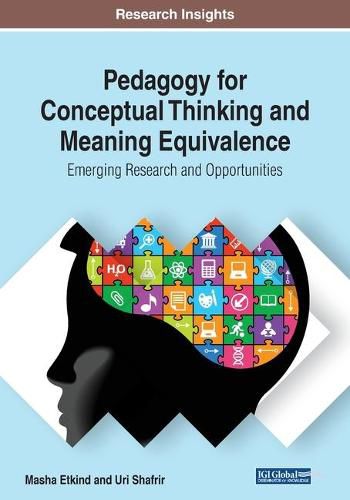Readings Newsletter
Become a Readings Member to make your shopping experience even easier.
Sign in or sign up for free!
You’re not far away from qualifying for FREE standard shipping within Australia
You’ve qualified for FREE standard shipping within Australia
The cart is loading…






This title is printed to order. This book may have been self-published. If so, we cannot guarantee the quality of the content. In the main most books will have gone through the editing process however some may not. We therefore suggest that you be aware of this before ordering this book. If in doubt check either the author or publisher’s details as we are unable to accept any returns unless they are faulty. Please contact us if you have any questions.
Research in neuroscience and brain imaging show that exposure of learners to multi-semiotic problems enhance cognitive control of inter-hemispheric attentional processing in the lateral brain and increase higher-order thinking. Multi-semiotic representations of conceptual meaning are found in most knowledge domains where issues of quantity, structure, space, and change play important roles, including applied sciences and social science. Teaching courses in History and Theory of Architecture to young architecture students with pedagogy for conceptual thinking allows them to connect analysis of historic artifact, identify pattern of design ideas extracted from the precedent, and transfer concepts of good design into their creative design process.
Pedagogy for Conceptual Thinking and Meaning Equivalence: Emerging Research and Opportunities is a critical scholarly resource that demonstrates an instructional and assessment methodology that enhances higher-order thinking, deepens comprehension of conceptual content, and improves learning outcomes. Based on the rich literature on word meaning and concept formation in linguistics and semiotics, and in developmental and cognitive psychology, it shows how independent studies in these disciplines converge on the necessary clues for constructing a procedure for the demonstration of mastery of knowledge with equivalence-of-meaning across multiple representations. Featuring a wide range of topics such as curriculum design, learning outcomes, and STEM education, this book is essential for curriculum developers, instructional designers, teachers, administrators, education professionals, academicians, policymakers, and researchers.
$9.00 standard shipping within Australia
FREE standard shipping within Australia for orders over $100.00
Express & International shipping calculated at checkout
This title is printed to order. This book may have been self-published. If so, we cannot guarantee the quality of the content. In the main most books will have gone through the editing process however some may not. We therefore suggest that you be aware of this before ordering this book. If in doubt check either the author or publisher’s details as we are unable to accept any returns unless they are faulty. Please contact us if you have any questions.
Research in neuroscience and brain imaging show that exposure of learners to multi-semiotic problems enhance cognitive control of inter-hemispheric attentional processing in the lateral brain and increase higher-order thinking. Multi-semiotic representations of conceptual meaning are found in most knowledge domains where issues of quantity, structure, space, and change play important roles, including applied sciences and social science. Teaching courses in History and Theory of Architecture to young architecture students with pedagogy for conceptual thinking allows them to connect analysis of historic artifact, identify pattern of design ideas extracted from the precedent, and transfer concepts of good design into their creative design process.
Pedagogy for Conceptual Thinking and Meaning Equivalence: Emerging Research and Opportunities is a critical scholarly resource that demonstrates an instructional and assessment methodology that enhances higher-order thinking, deepens comprehension of conceptual content, and improves learning outcomes. Based on the rich literature on word meaning and concept formation in linguistics and semiotics, and in developmental and cognitive psychology, it shows how independent studies in these disciplines converge on the necessary clues for constructing a procedure for the demonstration of mastery of knowledge with equivalence-of-meaning across multiple representations. Featuring a wide range of topics such as curriculum design, learning outcomes, and STEM education, this book is essential for curriculum developers, instructional designers, teachers, administrators, education professionals, academicians, policymakers, and researchers.